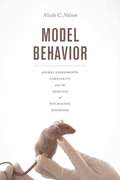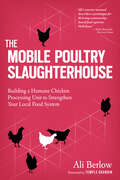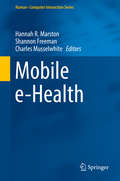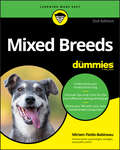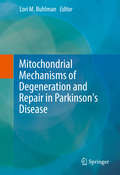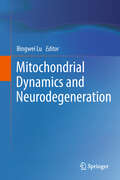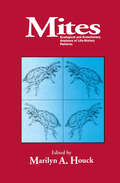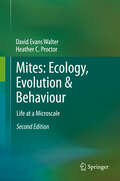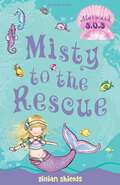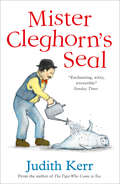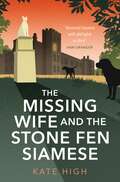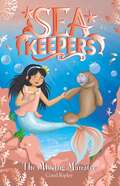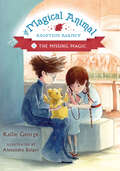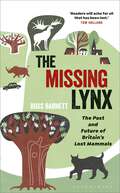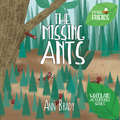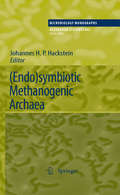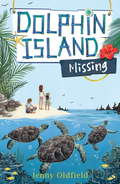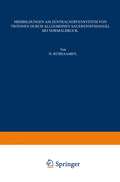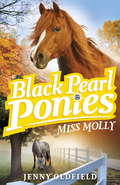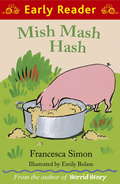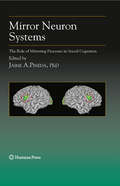- Table View
- List View
Model Behavior: Animal Experiments, Complexity, and the Genetics of Psychiatric Disorders
by Nicole C. NelsonMice are used as model organisms across a wide range of fields in science today—but it is far from obvious how studying a mouse in a maze can help us understand human problems like alcoholism or anxiety. How do scientists convince funders, fellow scientists, the general public, and even themselves that animal experiments are a good way of producing knowledge about the genetics of human behavior? In Model Behavior, Nicole C. Nelson takes us inside an animal behavior genetics laboratory to examine how scientists create and manage the foundational knowledge of their field. Behavior genetics is a particularly challenging field for making a clear-cut case that mouse experiments work, because researchers believe that both the phenomena they are studying and the animal models they are using are complex. These assumptions of complexity change the nature of what laboratory work produces. Whereas historical and ethnographic studies traditionally portray the laboratory as a place where scientists control, simplify, and stabilize nature in the service of producing durable facts, the laboratory that emerges from Nelson’s extensive interviews and fieldwork is a place where stable findings are always just out of reach. The ongoing work of managing precarious experimental systems means that researchers learn as much—if not more—about the impact of the environment on behavior as they do about genetics. Model Behavior offers a compelling portrait of life in a twenty-first-century laboratory, where partial, provisional answers to complex scientific questions are increasingly the norm.
Model Behavior: Animal Experiments, Complexity, and the Genetics of Psychiatric Disorders
by Nicole C. NelsonMice are used as model organisms across a wide range of fields in science today—but it is far from obvious how studying a mouse in a maze can help us understand human problems like alcoholism or anxiety. How do scientists convince funders, fellow scientists, the general public, and even themselves that animal experiments are a good way of producing knowledge about the genetics of human behavior? In Model Behavior, Nicole C. Nelson takes us inside an animal behavior genetics laboratory to examine how scientists create and manage the foundational knowledge of their field. Behavior genetics is a particularly challenging field for making a clear-cut case that mouse experiments work, because researchers believe that both the phenomena they are studying and the animal models they are using are complex. These assumptions of complexity change the nature of what laboratory work produces. Whereas historical and ethnographic studies traditionally portray the laboratory as a place where scientists control, simplify, and stabilize nature in the service of producing durable facts, the laboratory that emerges from Nelson’s extensive interviews and fieldwork is a place where stable findings are always just out of reach. The ongoing work of managing precarious experimental systems means that researchers learn as much—if not more—about the impact of the environment on behavior as they do about genetics. Model Behavior offers a compelling portrait of life in a twenty-first-century laboratory, where partial, provisional answers to complex scientific questions are increasingly the norm.
Model Behavior: Animal Experiments, Complexity, and the Genetics of Psychiatric Disorders
by Nicole C. NelsonMice are used as model organisms across a wide range of fields in science today—but it is far from obvious how studying a mouse in a maze can help us understand human problems like alcoholism or anxiety. How do scientists convince funders, fellow scientists, the general public, and even themselves that animal experiments are a good way of producing knowledge about the genetics of human behavior? In Model Behavior, Nicole C. Nelson takes us inside an animal behavior genetics laboratory to examine how scientists create and manage the foundational knowledge of their field. Behavior genetics is a particularly challenging field for making a clear-cut case that mouse experiments work, because researchers believe that both the phenomena they are studying and the animal models they are using are complex. These assumptions of complexity change the nature of what laboratory work produces. Whereas historical and ethnographic studies traditionally portray the laboratory as a place where scientists control, simplify, and stabilize nature in the service of producing durable facts, the laboratory that emerges from Nelson’s extensive interviews and fieldwork is a place where stable findings are always just out of reach. The ongoing work of managing precarious experimental systems means that researchers learn as much—if not more—about the impact of the environment on behavior as they do about genetics. Model Behavior offers a compelling portrait of life in a twenty-first-century laboratory, where partial, provisional answers to complex scientific questions are increasingly the norm.
Model Behavior: Animal Experiments, Complexity, and the Genetics of Psychiatric Disorders
by Nicole C. NelsonMice are used as model organisms across a wide range of fields in science today—but it is far from obvious how studying a mouse in a maze can help us understand human problems like alcoholism or anxiety. How do scientists convince funders, fellow scientists, the general public, and even themselves that animal experiments are a good way of producing knowledge about the genetics of human behavior? In Model Behavior, Nicole C. Nelson takes us inside an animal behavior genetics laboratory to examine how scientists create and manage the foundational knowledge of their field. Behavior genetics is a particularly challenging field for making a clear-cut case that mouse experiments work, because researchers believe that both the phenomena they are studying and the animal models they are using are complex. These assumptions of complexity change the nature of what laboratory work produces. Whereas historical and ethnographic studies traditionally portray the laboratory as a place where scientists control, simplify, and stabilize nature in the service of producing durable facts, the laboratory that emerges from Nelson’s extensive interviews and fieldwork is a place where stable findings are always just out of reach. The ongoing work of managing precarious experimental systems means that researchers learn as much—if not more—about the impact of the environment on behavior as they do about genetics. Model Behavior offers a compelling portrait of life in a twenty-first-century laboratory, where partial, provisional answers to complex scientific questions are increasingly the norm.
The Mobile Poultry Slaughterhouse: Building a Humane Chicken-Processing Unit to Strengthen Your Local Food System
by Ali BerlowAli Berlow offers a step-by-step guide to building a mobile poultry slaughterhouse that can serve communities and small farmers.
Mobile e-Health (Human–Computer Interaction Series)
by Hannah R. Marston Shannon Freeman Charles MusselwhiteThis multi-disciplinary collection of essays captures discussion, thinking and research surrounding the recent surge of interest in how technology can help us as we age. A wide range of topics are covered, from investigations in the use of technology to improve health and well-being, to examinations of digital gaming, mobile health apps and the quantified self in relation to an ageing population. From multi-disciplinary perspectives, this collection highlights the role of a more social approach to technology. As such, a variety of social research methods are used throughout the chapters. The benefits and issues with different approaches are highlighted both in terms of further research, but also so the reader can judge the value of the research for themselves.This collection brings together the latest thinking and cutting edge contemporary research from leading thinkers and academics in the field of human computer interaction, health and gerontology. In taking a social approach, it highlights how technological practices fit within wider gerontological, political and cultural perspectives. It therefore has potential to influence those working in human computer interaction, digital humanities, sociology, psychology and gerontology. It can help change the practice of people working in the health and social care field, in computer and product design, and in the digital and creative industries.
Mixed Breeds For Dummies
by Miriam Fields-BabineauUnderstand your mixed-breed dog Discover tips and tricks for the most effective training techniques Share your life with your new mixed-breed companion Own a classy dog—no pedigree required All dogs are unique—but mixed breeds are even more so! This friendly guide helps you count the ways, including why they often enjoy better health than their pedigreed counterparts and the reasons they can make better domestic companions. Whether you prefer mystery mixes or designer Labradoodles, a rescue from a shelter or a pup from a breeder—or you just want to know more about your dog—you'll find everything you need to properly choose, train, and care for your not-quite-best-in-show (but much-loved) best friend. This book will ensure you and your mixed-breed pal will live happily and healthily ever after. Inside... Decide which mix is the one for you Understand your pooch's temperament Establish discipline and overcome common training challenges Groom and exercise your dog the right way
Mixed Breeds For Dummies
by Miriam Fields-BabineauUnderstand your mixed-breed dog Discover tips and tricks for the most effective training techniques Share your life with your new mixed-breed companion Own a classy dog—no pedigree required All dogs are unique—but mixed breeds are even more so! This friendly guide helps you count the ways, including why they often enjoy better health than their pedigreed counterparts and the reasons they can make better domestic companions. Whether you prefer mystery mixes or designer Labradoodles, a rescue from a shelter or a pup from a breeder—or you just want to know more about your dog—you'll find everything you need to properly choose, train, and care for your not-quite-best-in-show (but much-loved) best friend. This book will ensure you and your mixed-breed pal will live happily and healthily ever after. Inside... Decide which mix is the one for you Understand your pooch's temperament Establish discipline and overcome common training challenges Groom and exercise your dog the right way
Mitochondrial Mechanisms of Degeneration and Repair in Parkinson's Disease
by Lori M. BuhlmanThis volume brings together various theories of how aberrations in mitochondrial function and morphology contribute to neurodegeneration in idiopathic and familial forms of Parkinson’s disease. Moreover, it comprehensively reviews the current search for therapies, and proposes how molecules are involved in specific functions as attractive therapeutic targets. It is expected to facilitate critical thought and discussion about the fundamental aspects of neurodegeneration in Parkinson’s disease and foster the development of therapeutic strategies among researchers and graduate students. Theories of idiopathic Parkinson’s etiology support roles for chronic inflammation and exposure to heavy metals or pesticides. Interestingly, as this project proposes, a case can be made that abnormalities in mitochondrial morphology and function are at the core of each of these theories. In fact, the most common approach to the generation of animal and cell-culture models of idiopathic Parkinson’s disease involves exposure to mitochondrial toxins. Even more compelling is the fact that most familial patients harbor genetic mutations that cause disruptions in normal mitochondrial morphology and function. While there remains to be no effective treatment for Parkinson’s disease, efforts to postpone, prevent and “cure” onset mitochondrial aberrations and neurodegeneration associated with Parkinson’s disease in various models are encouraging. While only about ten percent of Parkinson’s patients inherit disease-causing mutations, discovering common mechanisms by which familial forms of Parkinson’s disease manifest will likely shed light on the pathophysiology of the more common idiopathic form and provide insight to the general process of neurodegeneration, thus revealing therapeutic targets that will become more and more accessible as technology improves.
Mitochondrial Dynamics and Neurodegeneration
by Bingwei LuMitochondria are essential organelles in eukaryotic cells that control such diverse processes as energy metabolism, calcium buffering, and cell death. Recent studies have revealed that changes in mitochondrial morphology by fission and fusion, a process known as mitochondrial dynamics, is particularly important for neuronal function and survival. Defects in this process are commonly found in neurodegenerative diseases, offering a new paradigm for investigating mechanisms of neurodegeneration. To provide researchers working on neurodegenerative diseases and mitochondria with updated information on this rapidly progressing field, we have invited experts in the field to critically review recent progresses and identify future research directions. The topics include genetics of mitochondrial dynamics, mitochondrial dynamics and bioenergetics, autophagy, apoptosis, and axonal transport, and its role in neurological diseases, including Alzheimer’s, Parkinson’s, and Huntington’s diseases.
Mites: Ecological and Evolutionary Analyses of Life-History Patterns
by Marilyn A. HouckMany mites possess extremely intricate life styles in close association with plant and animal hosts. Their polymorphism has made classification a challenge, and their ability to reproduce both sexually and asexually has made efforts to control their populations difficult. This, however, has given rise to theories to explain the origin and function of sexual reproduction in general. In numbers of species and geographic distribution, mites may even surpass the insects. In soils, they are a major component in the system for cycling nutrients. Unlike insects, they have invaded the marine environment. These and a number of other topics are explored in Mites. Because of their extremely small size, mites have been ignored during the development of major evolutionary and ecological theories. Yet mites routinely violate fundamental concepts such as heterochrony, sexual selection, the evolution of sex ratio, and ontogeny. Recent research methodologies have made it practical for the first time to perform experimental work with mites, and since they offer short generation times and rapid research results, they are excellent model systems. Mites announces these results and should appeal to professionals in entomology, acarology, ecology, population genetics, and evolutionary biology.
Mites: Life at a Microscale
by David Evans Walter Heather C. ProctorMore than 40,000 species of mites have been described, and up to 1 million may exist on earth. These tiny arachnids play many ecological roles including acting as vectors of disease, vital players in soil formation, and important agents of biological control. But despite the grand diversity of mites, even trained biologists are often unaware of their significance. Mites: Ecology, Evolution and Behaviour (2nd edition) aims to fill the gaps in our understanding of these intriguing creatures. It surveys life cycles, feeding behaviour, reproductive biology and host-associations of mites without requiring prior knowledge of their morphology or taxonomy. Topics covered include evolution of mites and other arachnids, mites in soil and water, mites on plants and animals, sperm transfer and reproduction, mites and human disease, and mites as models for ecological and evolutionary theories.
Misty to the Rescue: Mermaid SOS 1
by Gillian Shields Helen TurnerJust as Misty and her friends start to make their way back to Coral Kingdom with the magic crystals for Queen Neptuna, a storm whipped up by the evil Mantora throws them right off course!Misty and her fellow Sisters of the Sea are lost, but they must find their way home as quickly as possible in order to complete their important mission.Misty comes up with a brilliant plan to help her mermaid friends, as well as saving a forest deep in the ocean from a terrible end.
Mister Cleghorn’s Seal
by Judith KerrAn exquisite new story to delight readers young and old, from a much-loved writer and illustrator.
The Missing Wife and the Stone Fen Siamese: a heartwarming cosy crime book, perfect for animal lovers
by Kate High'Animal lovers will delight' Ann Granger on The Cat and the Corpse in the Old Barn'A real treat . . . I loved it. Cats, dogs, murder and a credible and relatable heroine' Barbara Nadel onThe Cat and the Corpse in the Old Barn Driving home from a ceramics evening class, Clarice Beech reflects on the absence of one of her students, Colin Compton-Smythe. Later, Emily, Colin's daughter, telephones to say her father has died during routine surgery. Distraught, Emily opens up to Clarice about his wretched childhood and the day five-year-old Colin returned home to discover Avril, his mother, gone. Colin never believed she would have left without him and had been trying to find out more about Avril's disappearance all those years ago.Clarice readily agrees to accompany Emily to Colin's funeral. On arriving at the stunning Victorian Gothic manor house, with Bellatrix, the majestic stone Siamese cat reposing at its entrance, Clarice soon becomes drawn into the fractious world of the Compton-Smythe family: Colin's argumentative father Ralph and his equally combative partner Tessa, their daughter, Dawn, being stalked by an ex-lover and, most unsettling of all, Ernestine, Ralph's emotionally unpredictable sister. And then there's Johnson, Ralph's menacing manservant.Clarice discovers the nearer she gets to the truth, the greater she is in danger as somebody is intent that the mystery of the missing wife should never be resolved.
The Missing Manatee: Book 9 (Sea Keepers #9)
by Coral RipleySea Keepers to the rescue - a baby manatee needs their help! A magical series about saving our oceans.Emily, Grace and Layla travel to the tropics to search for a magic pearl. But disaster strikes when evil Effluvia kidnaps a baby manatee and holds it for ransom. Effluvia demands a magic pearl in exchange for the little manatee. If the Sea Keepers give into the wicked siren, they won't be able to stop her from releasing her siren sisters . . . It's up to the Sea Keepers to save the manatee - and the whole underwater world!
The Missing Magic (The Magical Animal Adoption Agency #3)
by Kallie GeorgeBook 2 in the marvelous illustrated chapter book series, The Magical Animal Adoption Agency.A new volunteer has joined the Magical Animal Adoption Agency, and Clover's not too happy about it! Oliver Von Hoof is supposed to be an expert on magical animals, but he's barely older than Clover. How can he be an expert on anything? And it doesn't help that Mr. Jams keeps turning to Oliver instead of Clover for help with the animals.When Mr. Jams is called away from the Agency on a secret mission, Clover and Oliver are put in charge of the Agency once again. But when Picnic the invisible puppy starts turning visible, and the Agency's green cat, Dipity, begins to look white, Clover and Oliver realize that all of the amazing creatures are becoming ordinary. Even Oliver's trusty magical wands aren't enough to cure them! Will Oliver and Clover learn to work together in time to restore the animals' magical powers?Alexandra Boiger's delightful illustrations shine in the third book of Kallie George's The Magical Animal Adoption Agency series where an open heart can best the nastiest of spells.Praise for Clover's Luck"[This] gentle tale of magic and self-reliance will entertain confident new independent readers. Clover's sweet story is a good next step for lovers of the Magic Tree House." -- Kirkus Reviews"Readers will be envious of the world of magic that Clover becomes ensconced in and eager to read future installments." -- Publishers Weekly"The first novel in George's new series is a charming story, delicately written, with a winning heroine. Clover's first adventure with the magical animals at the agency comes to a conclusion that will satisfy young readers." -- Booklist Online"Clover is a winning hero worth following." -- Library Media Connection
The Missing Lynx: The Past and Future of Britain's Lost Mammals
by Ross BarnettBritain's lynx are missing, and they have been for more than a thousand years. Why have they gone? And might they come back?A mere 15,000 years ago, Britain was a very different place – home to lions, lynx, bears, wolves, bison and many more megafauna. But as the climate changed and human populations expanded, changing habitats and wiping out wildlife, most of the British megafauna disappeared. Will we ever be able to bring these mammals back? And if it's possible, should we?In The Missing Lynx, palaeontologist Ross Barnett uses case studies, new fossil discoveries, biomolecular evidence and more to paint a picture of these lost species, and to explore the significance of their disappearance in ecological terms. He also discusses how the Britons these animals shared their lives with might have viewed them, and questions why some survived while others vanished. Barnett also looks in detail at the realistic potential of reintroductions, rewilding and even of resurrection, both in Britain and overseas, from the innovative Oostvaardersplassen nature reserve to the revolutionary Pleistocene Park in Siberia, which has already seen progress in the revival of 'mammoth steppe'. With the world going through a 'sixth extinction' caused by widespread habitat destruction, climate change and an ever-growing human population, this timely book explores the spaces that extinction has left unfilled, in Britain and elsewhere. By understanding why some of our most charismatic animals are gone, we can look to a brighter future, perhaps with some of these missing beasts returned to the land on which they once lived and died.
The Missing Ants (Little Friends: Woodland Adventures Series #2)
by Ann BradyFlora Frog is sat enjoying the sunshine when she hears that Abby Ant’s sister Annie Ant and her brothers Alex and Andy Ant are missing. Bella Bee and Dolly Dragonfly go off to try to find them but they can’t. Poor Abby Ant becomes upset so Boris Wasp tries to find them. Soon he comes back with good news and before long the missing Ants come sailing down the river. This makes everyone very happy and Abby Ant goes sailing away into the sunshine.
**Missing** (Microbiology Monographs #19)
by Johannes H.P. H. P. HacksteinThis updated monograph deals with methanogenic endosymbionts of anaerobic protists, in particular ciliates and termite flagellates, and with methanogens in the gastrointestinal tracts of vertebrates and arthropods. Further chapters discuss the genomic consequences of living together in symbiotic associations, the role of methanogens in syntrophic degradation, and the function and evolution of hydrogenosomes, hydrogen-producing organelles of certain anaerobic protists. Methanogens are prokaryotic microorganisms that produce methane as an end-product of a complex biochemical pathway. They are strictly anaerobic archaea and occupy a wide variety of anoxic environments. Methanogens also thrive in the cytoplasm of anaerobic unicellular eukaryotes and in the gastrointestinal tracts of animals and humans. The symbiotic methanogens in the gastrointestinal tracts of ruminants and other “methanogenic” mammals contribute significantly to the global methane budget; especially the rumen hosts an impressive diversity of methanogens. This makes this updated volume an interesting read for scientists and students in Microbiology and Physiology.
Missing: Book 5 (Dolphin Island)
by Jenny OldfieldA family marooned on an island finds loveable dolphins to help them survive: classic adventure from million-copy-selling Jenny Oldfield. Shipwrecked near a tiny island in a vast ocean, the Fisher family are guided to safety by a small pod of dolphins. Fleur, Alfie, Mia and their parents must learn to build shelter, find fresh water and hunt for food. Each of the children forms a special bond with one of the family of dolphins. Fleur adores the fun-loving, tail-walking Jazz. Mia names her dark-grey dolphin friend Stormy. And Alfie is saved from the shipwreck by Pearl, who always looks out for him. The family have relied on their pod of dolphins for everything - but they're ready to come to the rescue when, this time, it's their dolphin friends who need the kids' help! Jenny Oldfield strikes gold in this beautifully illustrated, exciting adventure story, the fifth in the Dolphin Island series.The full series: Shipwreck, Lost at Sea, Survival, Fire!, Missing, Storm Clouds.
Missbildungen am Zentralnervensystem von Tritonen durch Allgemeinen Sauerstoffmangel bei Normaldruck
by Heinz RübsaamenMiss Molly: Book 3 (Black Pearl Ponies #3)
by Jenny OldfieldKeira's home is Black Pearl Ranch, where she helps train ponies and lives the dream ...Sable Lucas's parents are organising a surprise birthday gift for her - a beautiful sorrel pony called Miss Molly! Keira's dad is given the job of training up the nervy pony and making her spook-proof in only three weeks.The day soon comes to unveil Sable's surprise, but something goes horribly wrong. What has got into Miss Molly? Determined to find out, Keira turns pony detective to uncover what's really going on ...
Mish Mash Hash (Early Reader)
by Francesca SimonEarly Readers are stepping stones from picture books to reading books. A blue Early Reader is perfect for sharing and reading together. A red Early Reader is the next step on your reading journey.The animals of Potter's Barn decide to make Belle the pig a cake. The trouble is, everybody has different ideas about what should go into the perfect cake - and it doesn't turn out quite as expected...
Mirror Neuron Systems: The Role of Mirroring Processes in Social Cognition (Contemporary Neuroscience)
by Jaime A. PinedaThe aim of this book is to bring together social scientists, cognitive scientists, psychologists, neuroscientists, neuropsychologists and others to promote a dialogue about the variety of processes involved in social cognition, as well as the relevance of mirroring neural systems to those processes. Social cognition is a broad discipline that encompasses many issues not yet adequately addressed by neurobiologists. Yet, it is a strong belief that framing these issues in terms of the neural basis of social cognition, especially within an evolutionary perspective, can be a very fruitful strategy. This book includes some of the leading thinkers in the nascent field of mirroring processes and reflects the authors’ attempts to till common ground from a variety of perspectives. The book raises contrary views and addresses some of the most vexing yet core questions in the field – providing the basis for extended discussion among interested readers and laying down guidelines for future research. It has been argued that interaction with members of one’s own social group enhances cognitive development in primates and especially humans (Barrett & Henzi, 2005). Byrne and Whiten (1988), Donald (1991), and others have speculated that abilities such as cooperation, deception, and imitation led to increasingly complex social interactions among primates resulting in a tremendous expansion of the cerebral cortex. The evolutionary significance of an imitation capability in primates is matched by its ontological consequences.
